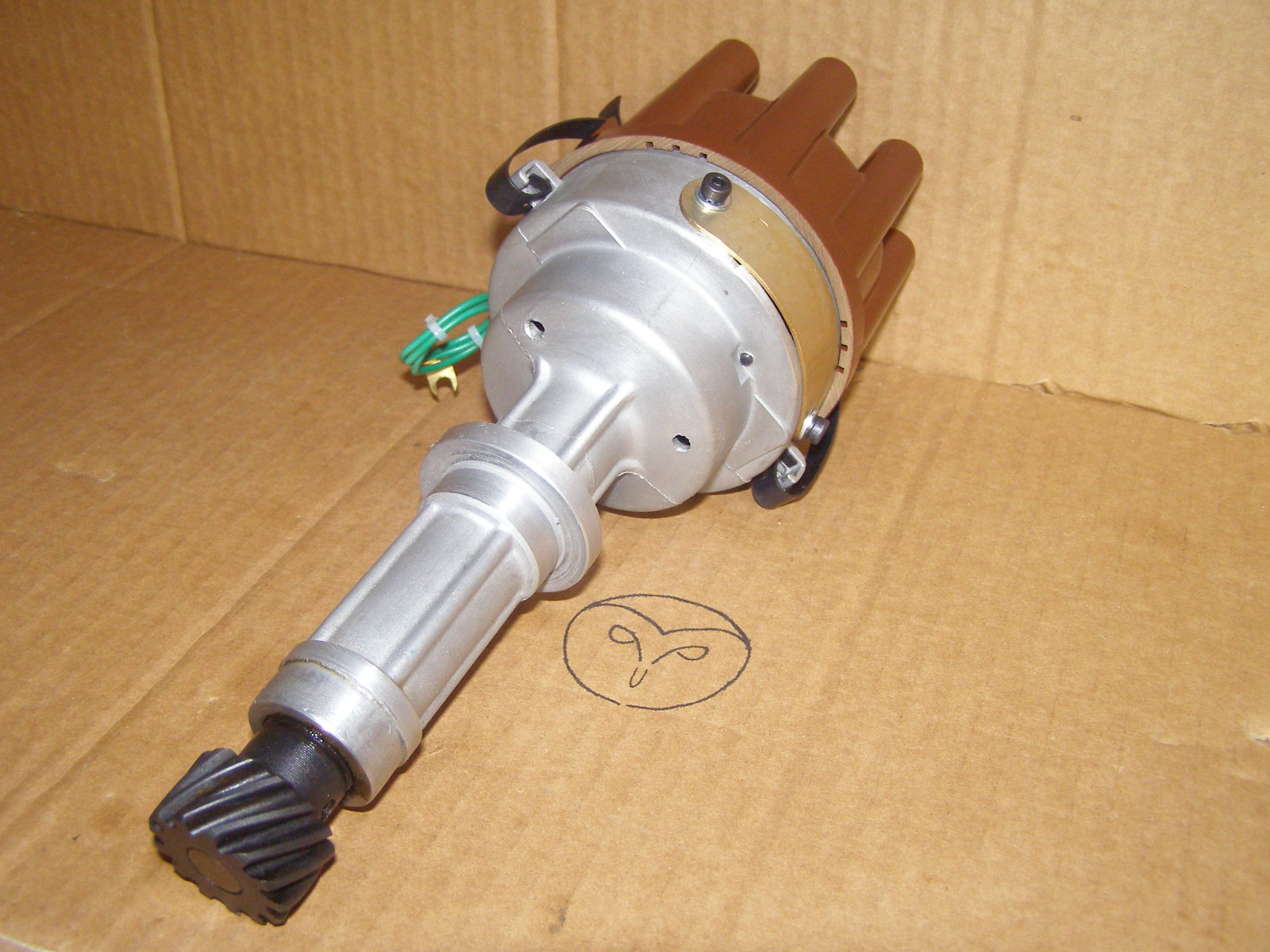VRD recently overhauled/restored/recommissioned two L34 Torana V8 4 Lobe points cam/dual coil distributors for a customer based in Invercargill N.Z. Two distributors and various customer-supplied spares were selected, restored and overhauled to arrive at two complete distributors by repairing various key rare piece parts in the customer's collection of spare items to enable installation and re-use.
One distributor is fitted with a new twin coil post cap we provided by inserting an additional coil post to an NORS brown bakelite standard Holden V8 single post cap.
Completed L34 Distributors Ready for Dispatch
Temporary tags on caps denote distributor (as opposed to engine) firing order. Provides ease of installation for customer who can reconcile distributor and engine firing orders to ensure correct lead placement.
Twin coil post caps with original on LHS and item on RHS of picture being newly "manufactured" cap
Freshly lubricated and assembled centrifugal advance mechanism and 4 lobe points cam
Broken centre shroud on one dual circuit rotor with secondary crack also visible
Remnants of broken shroud machined away, crack ground out and new black bakelite shroud ready for bonding in place.
New shroud epoxied in place and crack void potted with epoxy.
The customer supplied 3 caps and rotors and all had signs of rotor to cap interference during previous operation. The broken rotor shroud pictured would be the end result of rotor to cap interference. Careful final assembly and clearance checks ensured no interference issues now exist on either of the two finished distributor assemblies.
OEM quality control and tolerance stack-up considerations seemed to be lacking a little with these (low volume) production items.
One cap and rotor amongst the spare parts provided by the customer had clear evidence of electrical arcing/tracking across the bakelite insulating surfaces. As the offset carbon coil post brush that communicates with the "ring" contact on the dual circuit rotor is some distance from the rotor centreline, this carbon brush has a high rubbing velocity inflicted on it my the ring contact, whereas the conventional on-centre carbon brush contact experiences very little relative rubbing velocity. Accordingly, the offset carbon brush experiences a high wear rate and the carbon dust worn from the brush deposits itself on the rotor and cap interior and can lead to cross-firing and arcing in the interior of the cap. To ensure this does not happen, this design trait needs to be recognised, and the distributor maintained accordingly, with regular cleaning of the cap interior and rotor to remove carbon dust residue and to ensure the required insulation integrity exists.
4 lobe points cam, dual points, dual condensers of the two completely electrically independent ignition circuits. 45 degree distributor firing intervals = 90 degree engine firing intervals. With each circuit serving only 4 cylinders of the V8 engine and the engine firing order successively alternating from one circuit to the other, the dwell behaviour of each circuit and coil saturation time is akin to a 4 cylinder engine, so high RPM spark intensity is far superior to a standard 8 lobe cam/single coil V8 distributor. Due to the independence of the two circuits, careful setting of the 45 degree firing interval between each circuit during final rig testing is crucial to ensure all engine cylinders see the same spark advance during engine operation.
A now well outdated, but still clever and interesting design.



















